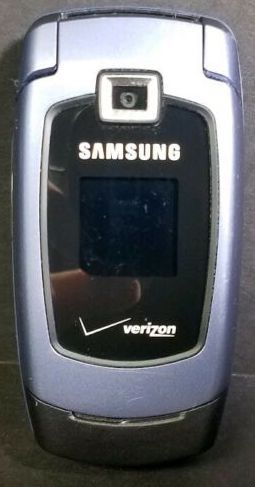[From SBE National Headquarters] The 56th SBE National Meeting, planned to be held in Syracuse, NY on Sept. 22 and 23, will now be conducted via the internet. The event was to be held in conjunction with the SBE Chapter 22 Broadcast & Technology Expo. Chapter 22 has announced that this year’s event has been canceled due to restrictions imposed by the state of New York due to the ongoing COVID-19 pandemic. SBE will hold a combined Annual Membership Meeting and National Awards Presentation via the internet at 4:00 p.m. PT on Wednesday, Sept. 23. Details on how to watch the on-line program will be shared soon via the SBE website, SBE-news email newsletter, and social media.
Is Your Mom’s Flip Phone Still Working?
Chris Aamodt, former senior engineer at KFMB Stations, recently sent a message saying that his elderly mother’s phone suddenly stopped working. After some time with Verizon customer service, he learned that they were no longer supporting their CDMA network in his rural Romona neighborhood.

It turns out that Verizon and AT&T are working to update their systems toward 5G and retiring the old 3G CDMA tower systems. These networks have issued warnings of impending obsolescence, but in the meantime, if a legacy 3G system fails, they seem to be replacing them with a new 4G LTE transceiver.
Sprint recently merged with T-Mobile and that’s a whole other mess, with Sprint’s legacy CDMA and T-Mobile’s legacy GSM networks working to update to LTE and 5G.
While broadcast engineers may be working with a backup data hotspot served by one of the major mobile telecoms, it’s most likely LTE and not ready to fail. That said, we recommend checking just to make sure. And check on your parents’ old phone while you’re at it.
Sage EAS Users: Update Your FEMA Certificate
[Sage ENDEC Press Release] This message is from Sage Alerting Systems regarding your Sage Digital ENDEC model 3644. It applies only to users in the United States.
Action required before October 28, 2020.
A signing certificate used by FEMA to validate CAP alerts will expire on Oct 28, 2020, at 14:05:29 UTC. Sage has released a free firmware update that you must install to permit your ENDEC to continue to receive EAS CAP alerts from FEMA after that date.
This release also updates the SSL root certificates that your ENDEC must have in order to download alert audio files from state or county alert originators.
You must already be running the Rev95 release. Users without Rev95 stopped validating CAP alerts in November 2019, and have been unable to connect to the IPAWS server as of July 6, 2020.
Please read the release notes. The installation process is straightforward as described in the release notes. Installing this update will not change any of the settings on your ENDEC.
If you have any questions regarding this update, please email us at support@… or call 914-872-4069 and press 1 for support. If you get voice mail, please leave a message and we will call you back.
H.266 Standard Finalized
It seems that audio and video compression is undergoing its own version of Moore’s Law progression, halving the required storage space or transmission bandwidth every few years. The Versatile Video Coding (VVC), or H.266, standard finalized July 6, 2020, by the Joint Video Experts Team (JVET). The standard is said to have a 30 – 50% better compression rate than the HEVC H.265 standard adopted in 2013, which was about 30 – 50% better than H.264, adopted in 2003. Naturally, the math is complex and compression encoding and decoding times are pretty hefty right now, but you know how that goes–someone’s going to design a chip, and next thing you know it’ll be part of your earphones.
We’ll see if ATSC 3 NextGen will include the standard in upcoming set-top boxes and televisions. H.265 has had some trouble with patent quibbles, which could lead to accelerated adoption of the newer H.266 standard.
Introducing 760 kHz, KGB-AM
The transition from multigenerational, family-owned KFMB-AM-FM-TV to corporate ownership by three different entities, it seems, has finally been laid to rest. The last move was iHeartMedia’s change of call letters for the AM property they acquired from KFMB-AM to KGB-AM. They’ve been using the historic three-letter call now for several days.
The call letters KGB were requested by general manager George Bowles in 1928 after initially signing on as KFBC in 1922. According to David Leonard and Wikipedia, KGB operated on 1210 kHz from 1925 till 1932. It switched to 1330 kHz, then in 1942 with a major nationwide shuffle of channels, landed on 1360 kHz. When the station went all-news for a while, the station changed call letters to CNN in 1982 and ceded the KGB callsign to its FM sister station at 101.5 MHz.
TEGNA bought the KFMB Stations in 2018, then sold the radio properties in early 2020 to Local Media San Diego, who immediately sold the AM station at 760 kHz to iHeartMedia. KGB-AM runs a conservative talk format out of iHeart’s San Diego studio complex.
